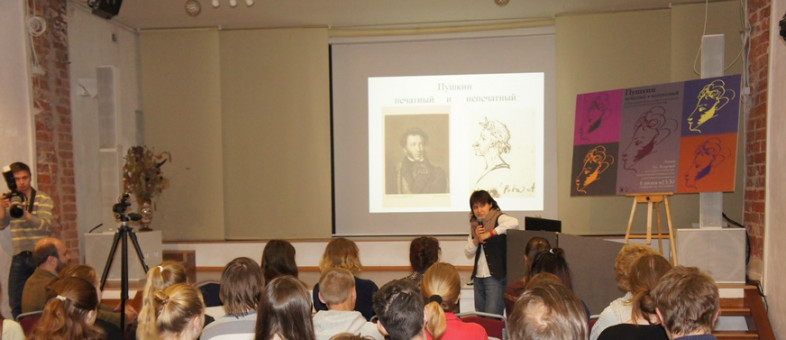
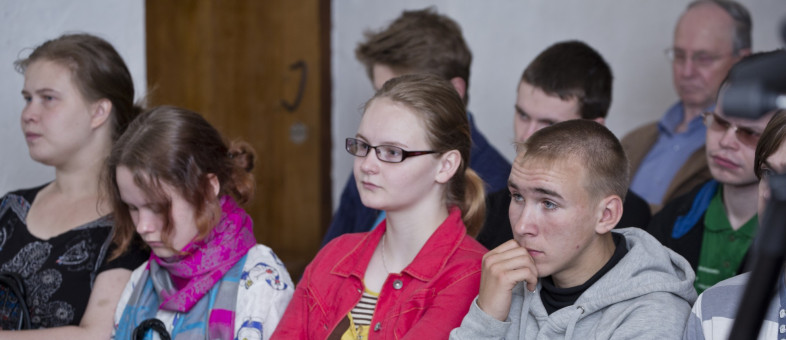

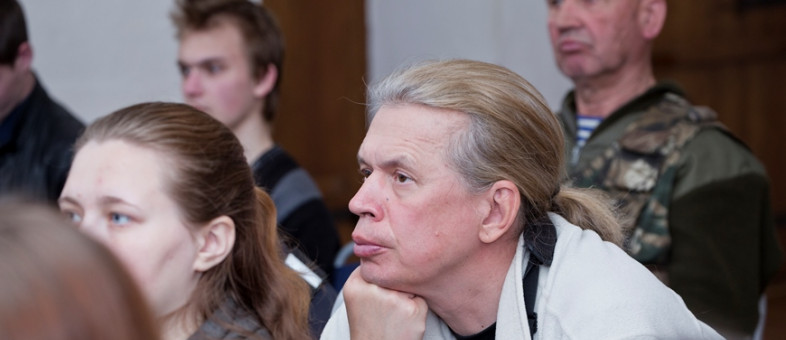

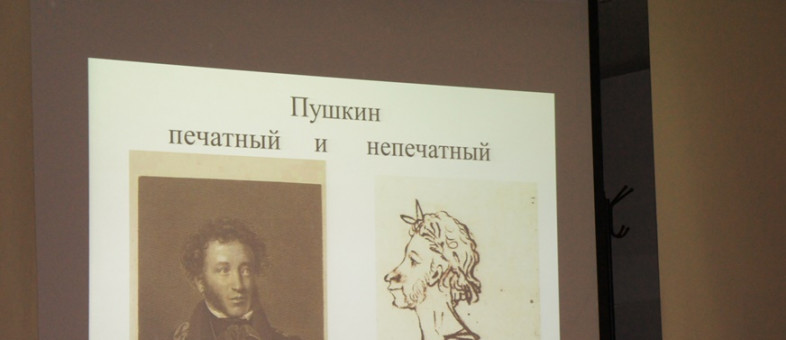
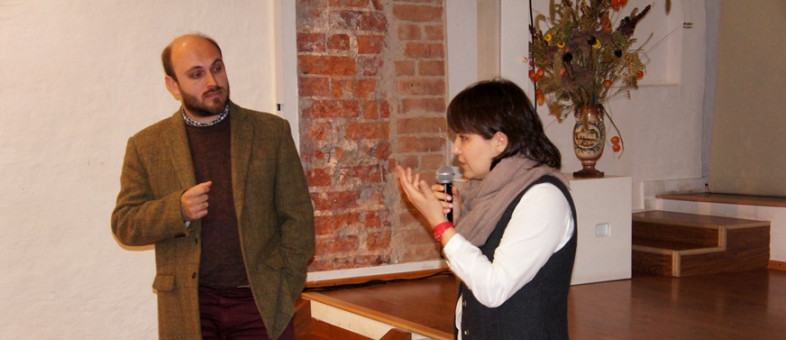
The research officer of the Pushkin House told about “printed and unprinted Pushkin” on June 6, on the anniversary of A.S. Pushkin’s birth, within the framework of the cycle “Foreign Evenings”.
Do you know that the full annotated collected edition of Pushkin hasn’t been published yet and the unusual lifetime edition of his works consisted of 1200 copies? His sharpest poems were widespread in the lists, were copied and passed on by word of mouth and the works subject to censorship were strictly reviewed. Alina Bodrova, Candidate of Philological Sciences, research officer of the Pushkin House, senior lecturer of the Higher School of Economics, participant of the academic collected edition of A.S. Pushkin, M.Y. Lermontov, Y.A. Baratynsky, told about all these issues in the conference hall of the Kirillo-Belozersky Museum-Reserve on June 6, on the anniversary of the great writer’s birth.
She read the lecture “Printed and Unprinted Pushkin: Pre-Revolutionary and Soviet Censorship on Guard of Pushkin’s Texts” within the framework of the cycle of lectures and public discussions “Foreign Evenings”.
The following question was discussed lively: what real Pushkin was – the one who was depicted in the portrait of Kiprensky or that one whom we could see in his own caricatures? What Pushkin do we read now?

“Modern Pushkin is associated with a large number of volumes. But only 35 books, mainly rather thin ones, were published during his lifetime… These were editions of his separate works – “Ruslan and Lyudmila”, “The Prisoner of the Caucasus”… Besides, Pushkin’s works were published in periodicals. Some texts were published in a magazine or a newspaper and then were never reprinted anywhere. A considerable part of his verses was widespread in manuscripts. And there were texts that he didn’t publish and didn’t widespread in the lists. Several texts that are well-known to us now have never been accomplished. It is another matter that when Pushkin lost his duel, his tutor and friend Vasily Andreevich Zhukovsky was commissioned by Emperor Nicholas I to participate in the sorting out of Pushkin’s manuscripts and he included not only lifetime publications, but also some unprinted texts preparing the first posthumous collection”, reported Alina Bodrova.
The contemporaries of Pushkin could “see” the well-known novel “Eugene Onegin” as a serial that lasted for 7 years! The verse novel was issued in chapters: the first one was published in St. Petersburg in 1825, and the eighth one - in 1832! All these chapter editions as well as all lifetime publications of Pushkin can be read even at home – they are available on the website of the Pushkin House in the section “Pushkin’s Library”.
We know a lot of works of Pushkin, but can’t even imagine that most of them were published after his death. For example, “Ode to Freedom” and “In the Depth of the Siberian Ores…” that pupils study at school haven’t been printed during the lifetime of Pushkin. The same can be said about “Guard Me, My Talisman” and “Confession” (Oh, I love you, but I’m mad with rage…”). Nevertheless, we all know these texts very well…
Sometimes Pushkin didn’t publish his verse not because they were not censored, but because he didn’t destine them for publication initially. It is important that Alexander Sergeevich didn’t dispute the existence of censorship.
There was censorship in England, but it was necessary in the opinion of Pushkin. He agreed with strict censorship, but it shouldn’t be “senseless”. Neither Pushkin, nor many other writers of his time wanted to abolish censorship completely, but they considered that it should be reasonable.
Some participants of the meeting asked Alina Bodrova whether Pushkin used swear words and showed frivolous scenes in his works. She answered, “Of course! He was a native speaker of Russian and knew all its layers. A different matter is where he used these obscene words”.
At the end of the lecture, the audience couldn’t help sharing their vision of Pushkin and censorship issues. One of them recited a poem written by Pushkin as he believed. But the lecturer had to disappoint him: it was one of the works ascribed to the great poet. They were abundantly widespread under his name already in the 19th century and have surprisingly come down to us.
The lecture “Printed and Unprinted Pushkin: Pre-Revolutionary and Soviet Censorship on Guard of Pushkin’s Texts” was broadcast live. Everybody can see it on the Youtube channel of the Kirillo-Belozersky Museum-Reserve.
Official name of the museum:
The Federal State Budgetary Institution of Culture “Kirillo-Belozersky Historical, Architectural and Art Museum-Reserve”
Founded:
In 1924
Museum status:
It was included into the State List of Particularly Valuable Objects of Cultural Heritage of the Peoples of the Russian Federation in 1997.